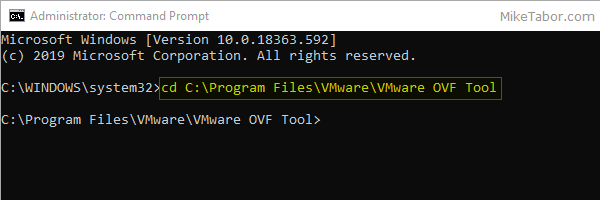

You may want to use a third party tool to do this such as Acronis.

There are several changes that should be made (if needed) to your VMware image before it is converted and uploaded to Azure. #-xxxx-xxxx-xxxx-xxxxxxxxxxxx) and copy/paste it somewhere safe Click on the Subscription that the certificate belongs to and select the Subscription ID (ex.

XXXXXXXXXXXXXXXXXXXXXXXXXXXXXXXXXXXXXXXXX) and copy/paste it somewhere safe While in the Management Certificates section, select the thumbprint (ex.Click on Hosted Services, Storage Accounts & CDN.Click on Preview and then Take me to Previous Portal (Note: this is probably a temporary step while Microsoft spins up its IaaS implementation).Note: If you get an error CryptCertStrToNameW failed => 0x80092023 (-2146885597), delete and retype all of the double-quotes in the command. Browse to C:\Windows\SysWOW64 and locate the.Makecert -sky exchange -r -n “CN=” -pe -a sha1 -len 2048 -ss My “.cer” Open the Visual Studio Command Line Prompt as an Administrator.
Ovf vmware tool how to#
More detailed documentation is available from Microsoft: Creating and Uploading a Virtual Hard Disk that Contains the Windows Server Operating System and How to Upload a VHD to Windows Azure. If you have any trouble with the export, you can run the command with the following flag to generate a log file to help with troubleshooting:Īlso, for more detailed usage on OVF Tool, check out the best two resources I know of, VMware and VMware’s own William Lam.This document describes the steps necessary to migrate a VMWare virtual machine (.vmx and accompanying. Here’s a screenshot of what a successful export looks like. This is the filename on the machine I’m running the OVF Tool on. If the VM is in a resource pool or folder, you’ll need to specify, but if the VM is in the root resource pool of the host like mine, you can just type the name. There’s a number of different ways to use this tool, including pointing at a datastore, searching using queries, etc.
Ovf vmware tool password#
You could also include a password if you’re scripting and don’t care if it’s in clear text. If you were trying to export a Workstation VM, you could just as easily use C: for instance. This is the path specific to ESXi/vCenter. I just put it in so that I wouldn’t have to type ‘yes’ to accept the SSL cert thumbprint. If you’re wiser than me, you might want to leave this flag out. I don’t have any of that garbage to test this on 😉 –noSSLVerify ovftool -noSSLVerify ~/Desktop/vCenter.ova.
Ovf vmware tool full#
Here’s the full command I used in my lab. I will break down the arguments individually, since this won’t be exactly the same for you. For me on Mac (using Fusion): /Applications/VMware Fusion.app/Contents/Library/VMware OVF Toolįor Windows, it should be: C:Program FilesVMwareVMware OVF Tool Export Locate OVF Tool tool from the command line.
Ovf vmware tool download#
Cheers! Download OVF Toolĭownload OVF Tool installer from the following link: If you have an occasion to export large amounts of VM’s to OVA’s like I currently do, you may find the following useful for creating a script to do just that.


 0 kommentar(er)
0 kommentar(er)
